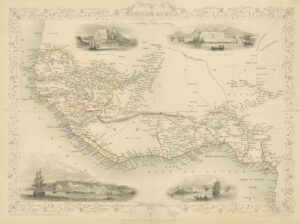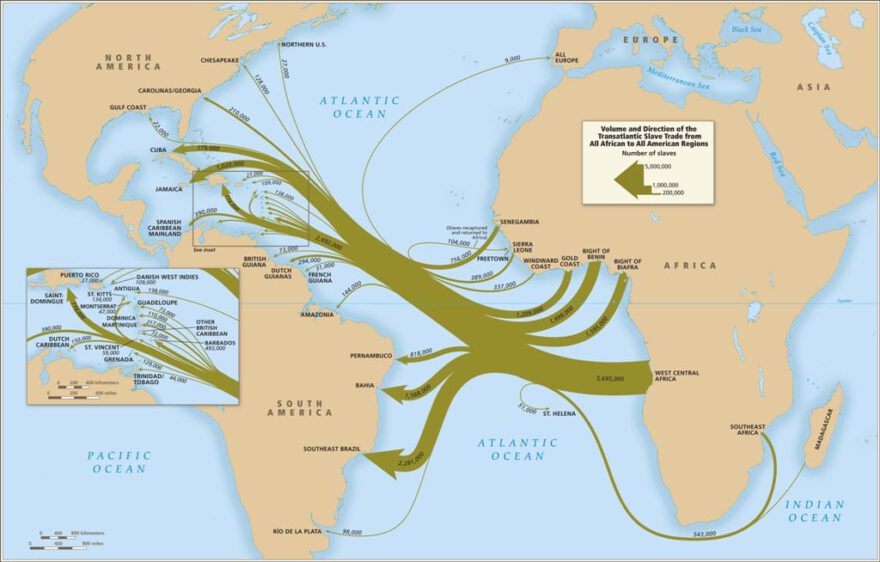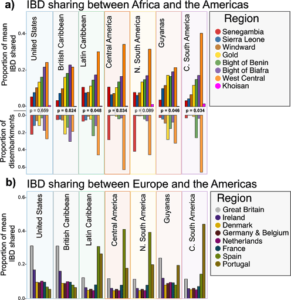Last week at the annual conference of the American Society of Human Genetics, 23andMe researchers presented one of the first and largest, broad-scale investigations using genetics to look at the human impact of the transatlantic slave trade.

The research uses genetic connections to Africans found in people living today in the Americas to help bridge the gap in the historical record of the enslavement of Africans. Written records of that history are incomplete. While there are detailed shipping manifests that document the movement of slaves from Africa to various ports in the Americas going back to the early 1500s, there is very little in the way of written records of what happened once they arrived. Beyond that, there is almost no documentation of the illegal slave trade that thrived during much of that time.
Bridging Genetic Data and Historical Records
The research, presented by Steven Micheletti, Ph.D., a 23andMe population geneticist, offers more details regarding the genetic links between people from different regions of the Americas and people from across Atlantic Africa. The data illustrates how to this day we can see the differences in African ancestry among people of African descent living in different regions of the Americas and how the genetic data closely matches what is known from shipping manifests.
The team used data from more than 50,000 23andMe customers who consented to participate in research and had four grandparents with roots across the Americas and Africa, including participants in 23andMe’s African Genetics Project. The study reveals more clearly how the different eras of the slave trade are reflected in the DNA of populations within the Americas.
By using a method for dating the genetic connections between Africa and the Americas, the researchers were able to see that the most recent African ancestry in the Americas traces back to West Central Africa, while the oldest African ancestry traces back to the Windward Coast of Africa and Senegambia. This timing matches the historical record of the slave trade.

Source: David Eltis and David Richardson, Atlas of the Transatlantic Slave Trade (New Haven, 2010), reproduced with the permission of Yale University Press.
Anniversary of the First Slaves to North America
23andMe’s research discoveries come on the 400 year anniversary since the first Africans were forcibly brought and enslaved in the United States.
The first 20 African slaves were brought to Point Comfort in Virginia in 1619, a year before the pilgrims landed on Plymouth Rock. Ultimately the transatlantic slave trade became the largest forced migration of people in all of human history, taking more than 12.5 million people from Africa towards ports in South America, Central America, the Caribbean, and North America. It is estimated that more than two million died in the holds of slave ships during the harrowing Middle Passage. Of those who survived the Middle Passage, from 3-to-5 percent ended up in North America. The remainder were taken to ports primarily in Central America, the Caribbean or South America.
Some of that history can be seen in the genetic data. For instance, the genetic data shows differences among people of African descent within the Americas. Those differences closely align with historical records that show where people from different regions in Africa were brought.
Africans in the Americas
For example, people in Brazil and some other regions of South America tend to have higher proportions of Congolese ancestry, while in Central America people have more Senegambian ancestry. Some of these differences across American regions are reflected

Mean Shared Identity by Descent (IBD). a) The proportion of mean shared IBD (cM) between Africa regions and America regions. This is the estimated proportions of people from different regions in Africa who were taken to different regions in the Americas. P-values indicate significant correlations between proportion of IBD shared and disembarkments. b) Proportion of mean shared IBD (cM) between Europe regions and America regions.
in the historical record of the slave trade. Some of the genetic trends may be a reflection of ports from which enslaved people were taken, and the shipping routes and destinations that changed over time. During the earliest waves of the slave trade, enslaved Africans were taken primarily from Senegambia and West Central Africa, or what is now known as the Democratic Republic of Congo and Angola. Many of those ships landed in Brazil and the Caribbean. More recent waves of enslaved Africans were taken from ports in the Bights of Benin, West Central Africa, and, possibly, the Windward Coast as well.
Other Evidence in the DNA
In addition, the researchers found an African female and European male sex bias. This pattern, which other researchers have reported on previously, reflects the ugly history of sexual exploitation and rape of enslaved women by their slave owners. It also likely reflects the nature of the slave trade itself that among other things included greater isolation of male slaves once they arrived in the Americas.
The new study enhances both our understanding of the history of the transatlantic slave trade and its lasting cultural implications for the Americas.
You can see all of 23andMe’s talks and posters presented at ASHG here.




